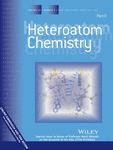A New Procedure for the Synthesis of Optically Active t-Butylphenylphosphinothioic Acid
Contract grant sponsor: National Science Center.
Contract grant number: UMO-2011/01/B/ST5/06664.
Dedicated to the 77th birthday of Professor Okazaki.
ABSTRACT
A new procedure for the synthesis of optically active t-butylophenylphosphinothioic acid as an enantiomerically pure dextrorotatory enantiomer having the absolute configuration (R), by a reaction of the racemate of secondary t-butylphenylphosphine oxide with elemental sulfur in the presence of a molar equivalent of the levorotatory enantiomer of enantiomerically pure (S)-α-phenylethylamine, is reported. It is obvious that with the use of the dextrorotatory enantiomer of α-phenylethylamine, the levorotatory enantiomer of this thioacid will be isolated.




